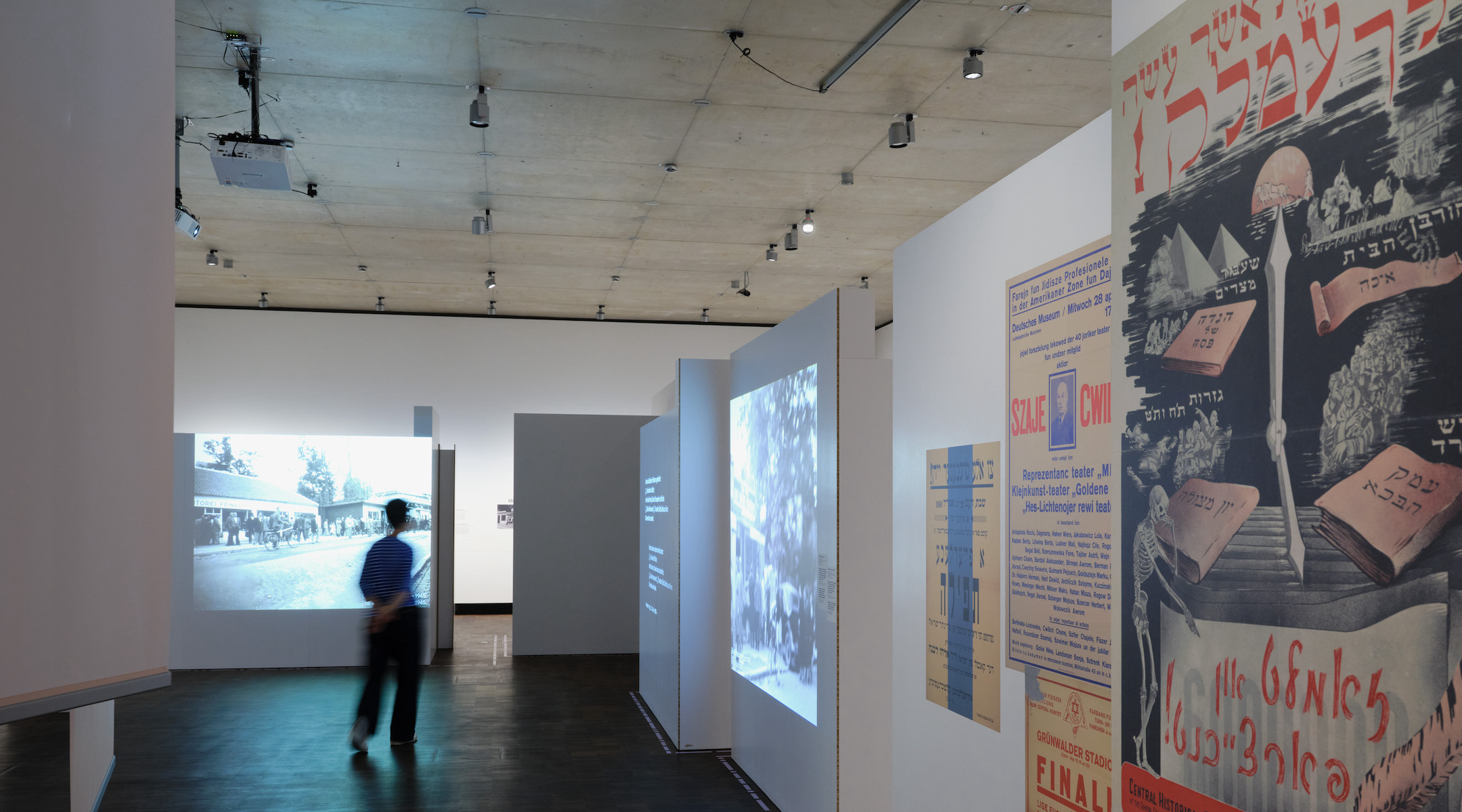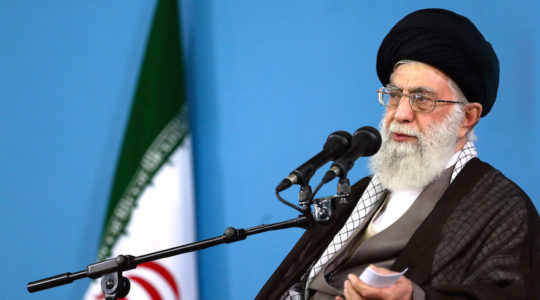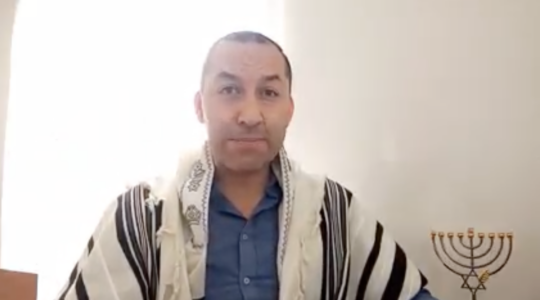BERLIN (JTA) — Rachel Salamander was born in an in-between time and place: The time was just after the end of the Holocaust, when no one knew what the future would bring for the remnants of European Jewry.
The in-between place was a displaced persons camp at Deggendorf, Germany. Her parents Samuel and Riva — survivors from Poland — were among the flood of refugees arriving from the east.
The refugees and other local DPs, as they were nicknamed, were “survivors of concentration camps or gulags, or just people who had everything taken away from them, totally at the end of their rope physically and mentally,” says Salamander.
Her family moved from Deggendorf to another DP camp, in Föhrenwald, and eventually settled in the Munich area. “They gave all their love and attention to us children, because we were their future, their hope.”
Life in the DP camps is the subject of a collaborative exhibition between Munich’s Jewish Museum and its City Museum, situated across the square from each other in the city’s center. Called “Munich Displaced: The Surviving Remnant,” and “Munich Displaced: After 1945 and without a Homeland,” the twin exhibits, which run through January 2024, tell the stories of tens of thousands of displaced persons — Jewish and non-Jewish — in post-war German limbo.
The exhibition project is, say its organizers, the first to focus on the lives and fates of all those people who fled, were displaced or deported during World War II and then found themselves in or near Munich after 1945.
After Germany capitulated in May 1945, there were more than eight million so-called displaced persons in Germany, Austria and Italy. For some 250,000 Jews, including about 75,000 in Germany, the DP camps — administered by the Allied authorities and the United Nations Relief and Rehabilitation Administration (UNRRA) — were places where they could regain their strength and perhaps find lost family, or create a new one.
The DP camp “was the beginning of the beginning,” said Ruth Melcer, 88, who was liberated from Auschwitz and later reunited with her parents in their home country, Poland. After the Kielce pogroms, the family fled to Berlin, and eventually were housed in the Föhrenwald DP camp in Munich.
But while they offered DPs a new start, the camps — many of them set up in former Nazi camps — were bleak. In some cases, Jewish DPs found themselves in the same camp with their erstwhile persecutors.
President Harry Truman tasked Earl Harrison, dean of the University of Pennsylvania Law School and the American envoy to the Intergovernmental Committee on Refugees, with producing a report on the conditions — which he found shockingly unsanitary.
“As matters now stand, we appear to be treating the Jews as the Nazis treated them except that we do not exterminate them,” Harrison wrote in 1945. “They are in concentration camps in large numbers under our military guard instead of S.S. troops.”
In response to the report, General Dwight Eisenhower, in command of U.S. forces in Europe, helped separate Jewish DPs from non-Jews and improve their overall conditions, sometimes in local housing.
“Jewish people have really a will to survive,” said Melcer’s friend Lydia Barenholz, 85, whose family spent a few months in the same Föhrenwald DP camp. They survived the end of the war in hiding near their home city of Lviv, which was then Poland, now Ukraine.
“We are hanging together with the strength of knowing that everyone could be my family,” said Barenholz, who lives with her husband Jacques in Holland.
Despite the hardships of DP camp life, many were just happy to be free of the Nazis.
“My parents’ life began again” at the Landsberg DP camp about 40 miles west of Munich, said Abraham Peck, who was born there in May 1946. After moving to the United States, they “talked about the life in Landsberg, not about the death that they observed in Lodz and in concentration camps.”
Of her childhood in the DP camp, Salamander recalled having “a clear, religious orientation. We spoke Yiddish and we kept all the Jewish holidays. I never had an identity problem, because there were clear coordinates.”
In Munich, there were approximately 100,000 DPs immediately after the end of the war. Of these, about 5,000 were Jewish.
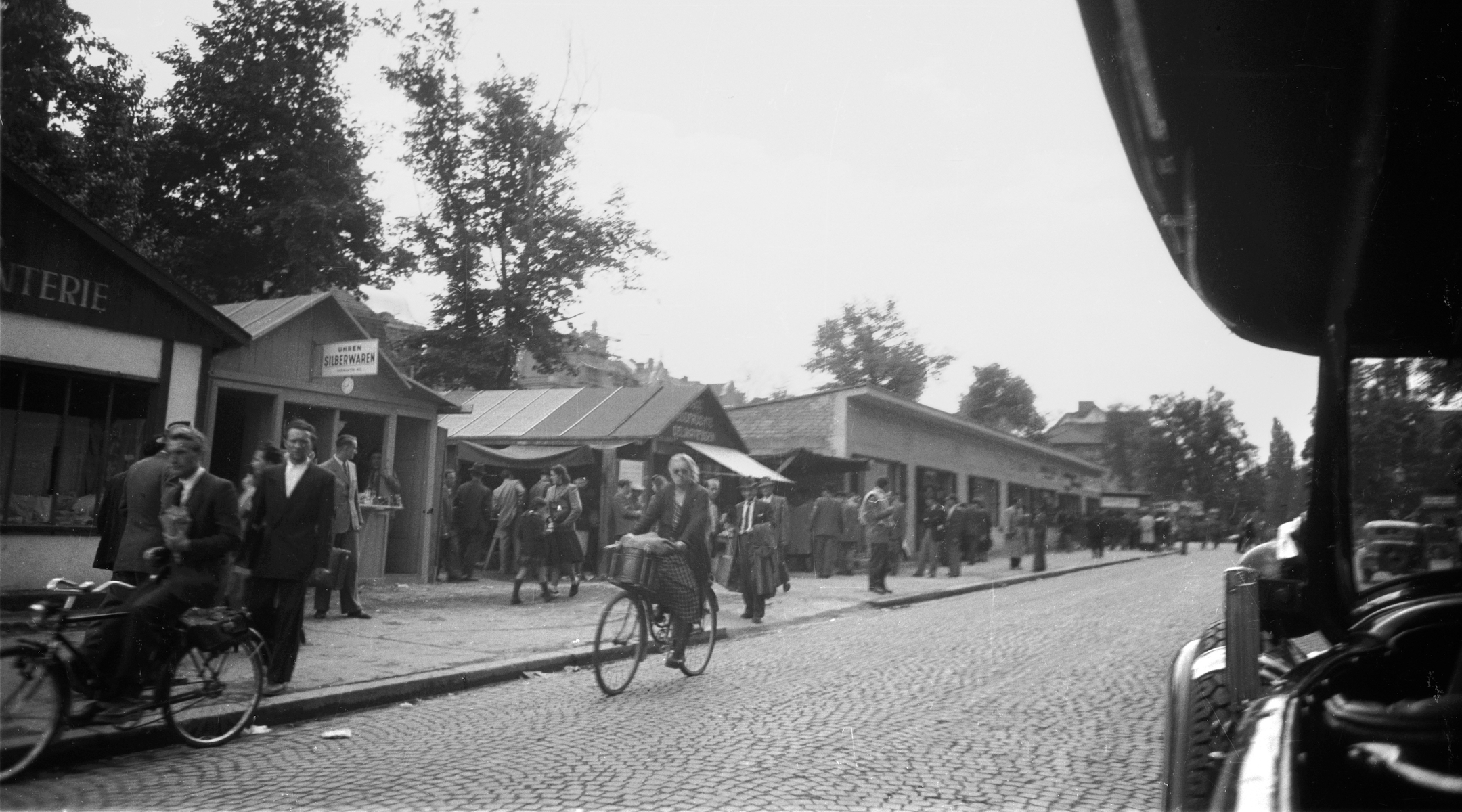
A view of an UNRRA DP camp in the Bogenhausen district of Munich in 1949. (Stadtarchiv München)
After the camps were dissolved, most DPs emigrated by 1950 to the United States and Israel, and only about 20,000 remained in Germany overall. That group, together with a tiny number of German Jews who had survived in hiding, made up Germany’s post-war Jewish community.
“The Jewish DPs were not only survivors or victims,” said Jewish Museum curator Jutta Fleckenstein. “They very quickly developed a Jewish self-awareness. And in this short ‘in-between time,’ after 1945, they could also be seen in the German landscape.”
“It all happened in this brief time,” added Fleckenstein, a historian who has focused on issues of identity and migration. “And then they were forgotten.”
Aiming to wrest this chapter from oblivion, the two museums are offering a program of events and have highlighted some 40 locations throughout the city where refugees once studied or gathered for social or religious events, where Jewish newspapers were printed and where Jewish aid organizations offered assistance. Objects on display came from the museums’ collections or were loaned by former DPs themselves.
“I kept all my high school certificates, pictures and books, so they installed a special corner for me” in the exhibition, said Barenholz, who had attended a Hebrew high school in Munich with her friend Melcer. Barenholz’s homework book is opened to a page that shows “I wrote a very nice Hebrew,” she said. “There were also some with corrections, but they didn’t open the book to that page.”
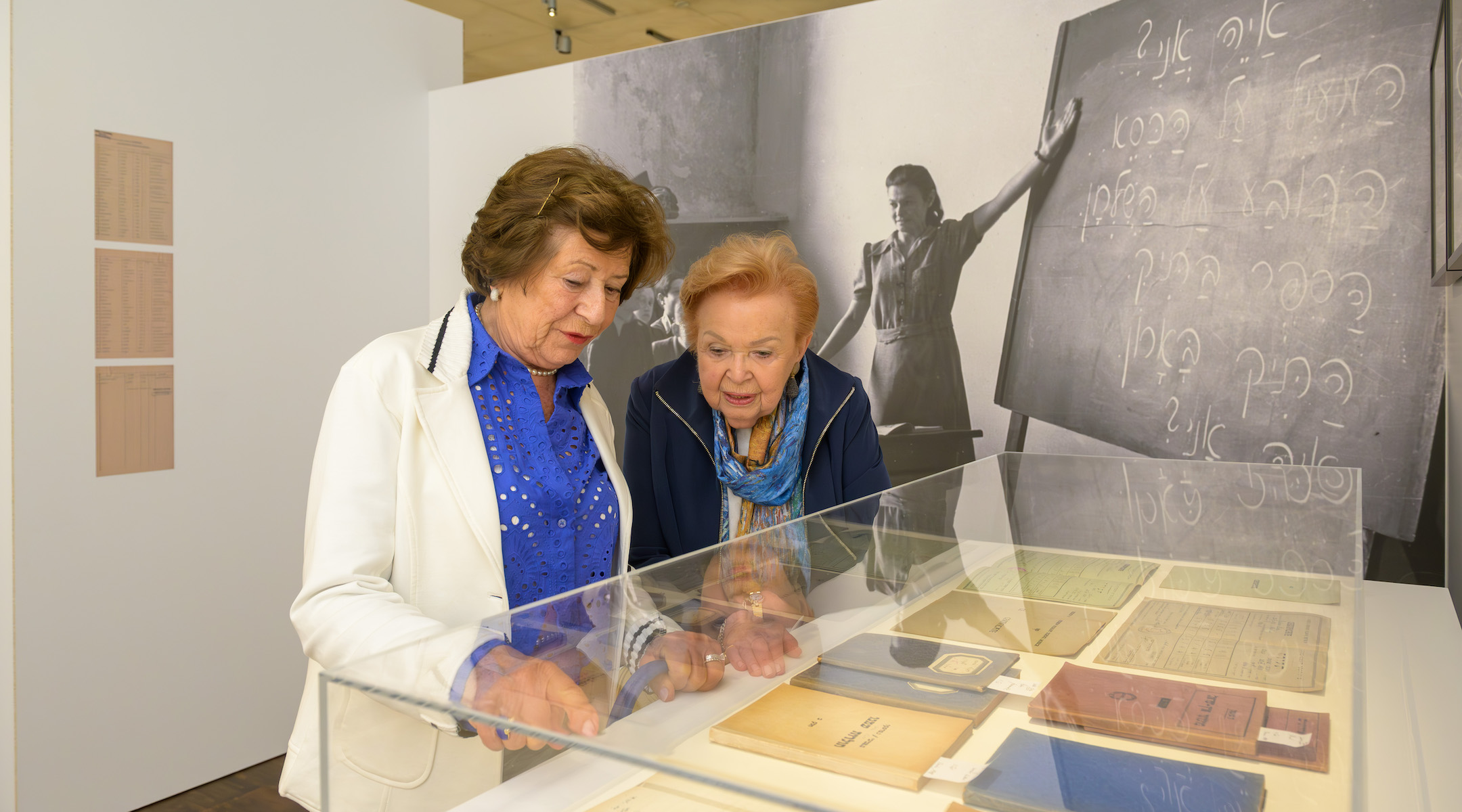
Lydia Barenholz and Ruth Melcer, who attended Munich’s post-war Hebrew high school together, are shown with some of the objects they contributed to the new exhibit, “Munich Displaced. The Surviving Remnant.” (Daniel Schvarcz)
“My hope is that visitors will learn what happened so that it will never happen again,” said Melcer, who contributed photos from her school days. “But the times are very bad for these hopes.”
Melcer, who married her husband Jossie in 1959, has stayed in touch with numerous former classmates around the world. She frequently speaks with pupils in German schools about her family’s story. In 2015, Melcer co-authored a cookbook-memoir, “Ruths Kochbuch,” with Ellen Presser.
Salamander, who founded a chain of Jewish bookstores in Germany, has loaned artifacts to an exhibit at the Reichenbachstrasse Synagogue, which was built in 1931 and reopened in 1947. For many decades, it was the main synagogue for Munich’s post-war Jewish community. Ten years ago, Salamander and Ron Jakubowicz started a foundation to press for the building’s reconstruction, which is under way.
“This idea of the spirit of Judaism, of welcoming the stranger, all the liberal things that define a good part of American Jewish life, were defined in the DP camps,” said Peck, professor of history at the University of Southern Maine and former administrative director of the American Jewish Archives at HUC in Cincinnati.
It seems to be a story whose time has come: Germany’s public broadcasting company Deutsche Welle has also produced a film about the DPs in post-war Landsberg.
Peck recently organized a week-long program marking 75 years since Leonard Bernstein conducted an orchestra of Holocaust survivors in Landsberg. Peck also co-organized with the Landsberg City Museum the first in a dialogue series, this one focusing on the history of the DP camp. It featured a discussion between Peck and Katrin Himmler, grandniece of Heinrich Himmler, Reichsführer of the SS.
The idea behind the dialogue “was to talk with people who had ancestors who were in the concentration camps in Landsberg or in the DP camp, and to ask questions that are important nowadays about racism and antisemitism,” said museum director Sonia Schaetz. The museum will include the DP camp history in its new permanent exhibit, due to open in late 2025.
Also in Landsberg, local grassroots historians Manfred and Helga Deiler are planning an exhibition and visitor center at the site where traces of a World War II slave labor camp can still be seen. Some of its survivors became residents of the local Jewish DP camp, they said.
Growing up in Landsberg, the Deilers never heard about the DP camp. Today, they occasionally bring visitors to the site, part of which today houses refugees from Afghanistan and Syria.
It was typical for post-war Germans to forget about the DP camps, says Fleckenstein of the Jewish Museum in Munich. As German-born American philosopher Hannah Arendt noted in her 1950 report from Germany, Germans in general were feeling sorry for themselves and reacted, if at all, with apathy “to the fate of the refugees in their midst.”
For survivors, too, this chapter fell into a kind of “twilight zone,” said Fleckenstein. “In many biographies this time doesn’t even come up at all. This time of waiting, this transitional time, often was not discussed.”
“The people with whom we lived in the DP camp were special,” recalls Salamander. “They all had a piece of destruction in them, they all had come directly from mass murder, they were all completely traumatized people who cried a lot, a lot.”
“And the whole time, they said the names of people whom they had lost. They were people really who had nothing, who had never been in Germany and did not want to be here. But the war had swept them here. They were uprooted, they had no political power. And they were always waiting for things to get better.”
JTA has documented Jewish history in real-time for over a century. Keep our journalism strong by joining us in supporting independent, award-winning reporting.
